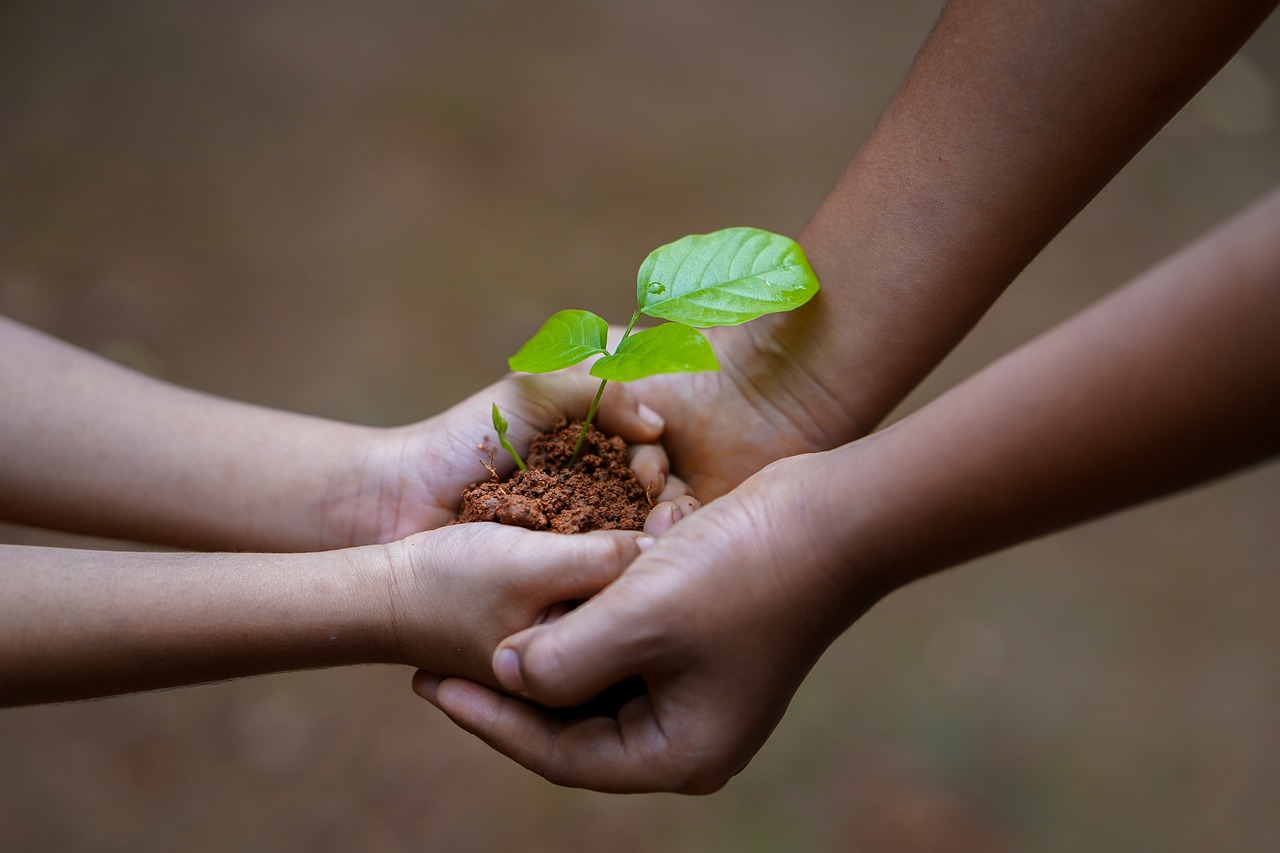The Giving Tree story teaches valuable life lessons about selflessness, unconditional love, and the importance of giving. It highlights how relationships can evolve over time and reflects on the balance between taking and giving in our interactions with others.
The Giving Tree, written by Shel Silverstein, is a poignant children’s book that has resonated with readers of all ages since its publication in 1964. The story revolves around the relationship between a tree and a boy. As the boy grows older, he continually takes from the tree until there is almost nothing left. This narrative prompts readers to reflect on themes of generosity, sacrifice, and the complexities of love.

At first glance, The Giving Tree appears to be a simple tale for children. However, its deeper meanings reveal significant life lessons. The book encourages discussions among parents and children about relationships and personal values. Many readers find themselves questioning their own lives and relationships while considering the lessons presented in the story.
To better understand the themes of the story, let’s break down some of the key elements that contribute to its enduring impact. These elements can be categorized into themes that resonate with both children and adults alike.
Key Themes and Life Lessons
One of the central themes of The Giving Tree is selflessness. The tree embodies unconditional love and gives everything it has to support the boy throughout his life. This theme serves as a powerful reminder of the beauty and strength found in selfless acts. It teaches readers that true love is often demonstrated through actions rather than words.

Another significant lesson is the concept of sacrifice. The tree sacrifices its own resources for the happiness of the boy. This brings to light how relationships often require sacrifice from both parties. It challenges readers to consider what they are willing to give up for those they care about. In many instances, love involves compromise and putting others’ needs before our own.
The story also invites reflection on the cycle of taking and giving in relationships. As the boy grows older, he takes more from the tree without giving anything back. This behavior can be a metaphor for human interactions, where one party may take advantage of another’s kindness. Readers are encouraged to think about their own relationships and ensure that they are balanced and reciprocal.
Table: Key Themes in The Giving Tree
| Theme | Description |
|---|---|
| Selflessness | The act of giving without expecting anything in return. |
| Sacrifice | Giving up something valuable for the sake of someone else’s happiness. |
| Reciprocity | The importance of balanced giving and taking in relationships. |
Furthermore, The Giving Tree raises questions about gratitude and appreciation. As the boy ages, he becomes increasingly demanding, taking from the tree without acknowledging its sacrifices. This can reflect how we sometimes take for granted the people who support us in our lives. It encourages readers to cultivate a sense of gratitude for those who give us their time, resources, and love.

The story also emphasizes the passage of time and its effects on relationships. As the boy transitions from childhood to adulthood, his relationship with the tree changes drastically. This illustrates how relationships can evolve over time, requiring both parties to adapt to new circumstances. The narrative reminds us that nurturing relationships takes effort and understanding, especially as life circumstances change.
In summary, The Giving Tree is more than just a children’s book; it serves as a profound exploration of love, sacrifice, and human connections. Its simple yet impactful narrative encourages readers to reflect on their own lives and relationships. By examining these lessons, individuals can develop a deeper understanding of what it means to give and receive love genuinely.
The Role of Giving in Relationships
The Giving Tree illustrates the essential role that giving plays in nurturing relationships. This theme is not just limited to the tree and the boy; it extends to all types of relationships, including friendships, family ties, and romantic partnerships. Understanding the dynamics of giving can help individuals build stronger connections with those around them.

Giving can take many forms. It is not always about material possessions; it can also include emotional support, time, and attention. Here are some key aspects of giving that are highlighted in the story:
- Emotional Support: Offering empathy and understanding during difficult times is a fundamental aspect of any healthy relationship.
- Quality Time: Spending time with loved ones fosters connection and shows that you value their presence in your life.
- Acts of Kindness: Simple gestures can make a big difference. These can include helping out with chores or surprising someone with a thoughtful gift.
The Impact of Selfishness
While The Giving Tree emphasizes the importance of giving, it also highlights the consequences of selfishness. As the boy continues to take from the tree without offering anything in return, he becomes increasingly distant. This behavior serves as a cautionary tale about how selfishness can harm relationships.
Selfishness can lead to feelings of resentment and disconnection. When one party consistently takes without reciprocating, it creates an imbalance that can strain the relationship. Understanding this dynamic is crucial for maintaining healthy connections. Here are some points to consider regarding selfishness:
- Awareness: Recognize when you are taking too much and not giving enough in your relationships.
- Communication: Openly discuss needs and expectations with loved ones to ensure both parties feel valued.
- Accountability: Take responsibility for your actions and make efforts to balance your contributions in relationships.
Lessons on Unconditional Love
The Giving Tree beautifully encapsulates the concept of unconditional love. The tree loves the boy selflessly, giving everything it has, even as its own resources dwindle. This portrayal of love raises questions about the nature of giving and receiving love.
Unconditional love means loving someone without any conditions or expectations. It involves accepting others for who they are, regardless of their flaws or mistakes. This lesson can be particularly valuable in various types of relationships, including parental love, friendships, and romantic partnerships. Here are some elements associated with unconditional love:
- Non-Judgment: Accepting others without criticism allows for deeper connections and fosters trust.
- Patience: Understanding that everyone has their own struggles makes it easier to offer support without conditions.
- Forgiveness: Being willing to forgive mistakes demonstrates a commitment to the relationship.
The Journey of Personal Growth
The boy’s journey throughout The Giving Tree reflects personal growth and the transition from childhood innocence to adulthood. As he matures, he faces challenges that require him to evaluate his relationship with the tree. This evolution emphasizes how personal growth impacts our relationships and the lessons we learn along the way.
Personal growth often requires reassessing our priorities and values. It can lead to more profound insights about what we want from our relationships. Here are some aspects of personal growth relevant to The Giving Tree:
| Stage of Growth | Description |
|---|---|
| Childhood | A time of innocence where giving is often instinctual and unconditional. |
| Adolescence | A period marked by self-discovery, where relationships become more complex. |
| Adulthood | A stage requiring reflection on past choices and their impact on current relationships. |
As individuals grow, so do their expectations and understanding of love and relationships. The lessons learned from The Giving Tree can guide readers towards healthier interactions with others as they navigate their own journeys of personal growth.
Understanding Boundaries in Relationships
Another significant lesson from The Giving Tree is the importance of establishing and respecting boundaries in relationships. While the tree’s selflessness is admirable, it raises critical questions about the limits of giving. Healthy relationships require understanding where to draw the line and recognizing that both parties have needs and limits.
Boundaries are essential for maintaining balance and ensuring that relationships do not become one-sided. Without boundaries, one party may feel overwhelmed or taken advantage of, leading to feelings of resentment. Here are some key aspects of boundaries that can be derived from the story:
- Personal Space: Every individual needs space to grow and feel comfortable. Respecting personal space ensures that both parties can thrive.
- Emotional Limits: Understanding emotional capacity is crucial. Each person has different levels of emotional energy, and it is vital to recognize when you or your partner may need time alone.
- Resource Limitations: Just as the tree eventually runs out of resources, people also have limits on what they can give. Recognizing these limits helps prevent burnout.
The Consequences of Ignoring Boundaries
The boy’s continuous taking from the tree without regard for its well-being illustrates what happens when boundaries are ignored. The relationship ultimately suffers, leading to a hollow existence for both the boy and the tree. Understanding the consequences of disregarding boundaries can help prevent similar outcomes in our lives.
- Resentment: When one party feels exploited, it can lead to bitterness and resentment, damaging the foundation of the relationship.
- Emotional Exhaustion: Constantly giving without receiving can drain emotional energy, leading to fatigue and withdrawal from the relationship.
- Loss of Identity: Individuals may lose sight of their own needs and desires when they do not enforce boundaries, resulting in a diminished sense of self.
Encouraging Mutual Respect
The Giving Tree also emphasizes the necessity of mutual respect in any relationship. For a relationship to thrive, both parties must appreciate each other’s contributions and feelings. This theme is vital for fostering healthy dynamics between individuals.
Respect is shown in various forms, including listening, valuing opinions, and acknowledging sacrifices made by others. Here are some ways to cultivate mutual respect:
- Active Listening: Pay attention when your partner speaks. Acknowledge their feelings and validate their experiences.
- Expressing Gratitude: Regularly express appreciation for what others do for you, no matter how small. This reinforces positive behaviors and strengthens bonds.
- Open Communication: Encourage honest conversations about feelings and expectations to maintain respect and understanding.
Building Trust Through Respect
Trust is another crucial element that develops from mutual respect. When individuals feel respected, they are more likely to trust each other. Trust creates a safe environment where both parties can express themselves freely without fear of judgment or rejection. Here are some ways to build trust:
| Trust-Building Actions | Description |
|---|---|
| Consistency | Being reliable and following through on promises helps establish trust over time. |
| Transparency | Being open about intentions and feelings fosters an atmosphere of honesty. |
| Support | Offering support during challenging times demonstrates commitment and strengthens trust. |
The lessons on trust and respect from The Giving Tree can guide readers in building healthier relationships that are rooted in equality and understanding. When both parties feel valued, it fosters a nurturing environment where love can flourish.
The Importance of Reflection
The narrative of The Giving Tree encourages readers to engage in self-reflection regarding their own relationships. Taking time to evaluate one’s actions and their impact on others can lead to personal growth and improved connections. Reflection allows individuals to assess whether they are giving too much or not enough in their relationships.
Here are some questions to consider when reflecting on personal relationships:
- Am I giving enough? Evaluate whether you are contributing positively to your relationships.
- Am I taking too much? Consider if you are relying on others without offering support in return.
- How do my actions affect my loved ones? Think about how your behavior impacts those around you, both positively and negatively.
By engaging in this type of reflection, individuals can gain insights into their relationship dynamics and make necessary adjustments to foster healthier interactions.
As readers reflect on The Giving Tree and its profound messages, they may also consider how the lessons learned can be applied in their own lives. The story not only offers insights into the dynamics of giving and receiving but also serves as a mirror for personal behaviors and attitudes in relationships. The importance of selflessness, sacrifice, and mutual respect cannot be overstated, as these elements are fundamental in nurturing lasting connections.
Additionally, the themes of boundaries and trust play a critical role in ensuring that relationships remain healthy. Recognizing when to give and when to step back is essential for personal well-being and the well-being of loved ones. It is important to maintain balance so that relationships can thrive without one party feeling overwhelmed or unappreciated.
Moreover, the journey of personal growth highlighted in the story encourages individuals to continually assess their relationships. This ongoing process of evaluation helps foster deeper connections and understanding among friends, family, and partners. By being open to change and willing to adapt, individuals can cultivate relationships that are not only meaningful but also mutually beneficial.
Final Thoughts
The Giving Tree ultimately serves as a powerful reminder of the complexities of love and relationships. The narrative illustrates that while giving is a beautiful act, it should not come at the cost of one’s own well-being. The lessons from this story resonate across various aspects of life, encouraging readers to engage in self-reflection and strive for balance in their interactions.
As individuals navigate their own relationships, they can take away several key points from The Giving Tree:
- Value Selflessness: Embrace the beauty of giving without expectations, but also recognize your limits.
- Establish Boundaries: Understand the importance of setting and respecting boundaries to maintain healthy relationships.
- Cultivate Mutual Respect: Ensure that both parties in a relationship feel valued and appreciated through consistent communication and gratitude.
- Reflect Regularly: Take time to evaluate your actions and their effects on your loved ones to foster personal growth and stronger connections.
In summary, The Giving Tree is more than just a children’s story; it is a timeless exploration of human relationships. Its lessons can guide individuals in building stronger bonds with others while maintaining their own sense of self. As readers internalize these messages, they can aspire to cultivate love that is both generous and reciprocated, creating relationships that are fulfilling for all parties involved.
Through the lens of The Giving Tree, we learn that love is a journey—one that requires effort, understanding, and a willingness to grow. By embracing these lessons, we can create a world where giving and receiving are harmoniously intertwined.
